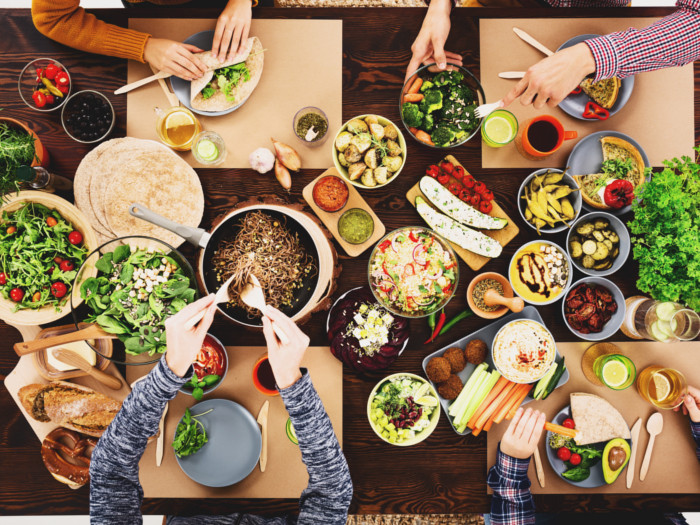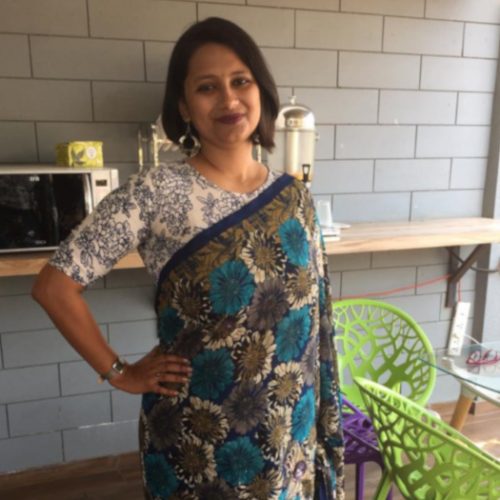Your cooking methods can make or break your dish. We might be very careful about picking the right ingredients, their proportions, and what combinations go on your plate. However, choosing the appropriate cooking method and its execution could also make it heart-healthy, irrespective of the ingredients you are cooking with. Know which are the best cooking methods that bring your plate together.
Healthy Cooking Methods
Most of us are aware of at least one way to cook each of the ingredients we use regularly. But it is never too late to review our cooking methods and adapt to suit the requirements of our health as well as the preparation. Here are the top healthy cooking methods which you could consider when cooking at home.
- Broiling
- Grilling
- Roasting
- Sautéing
- Pressure cooking
- Poaching
- Blanching
Let us look at these cooking methods in detail.

Many people use cooking as a de-stressing method. Photo Credit: Shutterstock
Boiling
This is the easiest method to cook many things, but not as effective for everything. All that is required for this cooking method is water, and maybe some salt. While eggs are easily cooked this way, the technique faces some criticism when it comes to vegetables. For most vegetables, boiling is a way of draining the essential nutrients and losing all its nutritional value, crunch, and even their taste and color. However, research suggests that boiling could have positive effects, such as better antioxidant activity, in vegetables like pumpkins. [1]
Steaming
Steaming is a possible alternative to boiling where the water does not come in contact with the ingredient being cooked and thus helps reduce the loss of nutrients. However, it may affect the crunch and color. In this method, the water heating at the base is separated from the produce by a perforated section, such as a colander, holding it separate from the vegetable or meat. Steaming is also a quick and easy way and can be used for vegetables like carrots, green beans, cruciferous vegetables such as broccoli and cauliflower, and even filets of fish. You can season it before or after the process, depending on your taste. Avoid over-steaming as it will destroy the essential nutrients.
Broiling
Direct application of heat is one of the traditional methods of cooking. But unlike most other cooking methods where heat is supplied from below and passes through the medium of a utensil, broiling involves direct heat from the top, usually inside an oven or by using a broiler. This technique can be used to cook meat or fish, or even potatoes. Be sure to season and marinate it beforehand and apply a little oil or fat for a crispy exterior. In case of meat and fish, let it sit for a few minutes, allowing the juices to settle.
Grilling
Grilling, like broiling, is a dry heat cooking method which is cooking without the addition or requirement of moisture. Here, meat and vegetable preparations are cooked over open heat flames on a grill. Done correctly, with the right use of wood, meat, and duration over the fire, the ingredients cooked this way acquire a distinct flavor and caramelization. To determine the flavor more definitely, the marinade is key. Especially with meat, marinate it a few hours before putting it on the grill. Once done, let it sit for a few minutes. While it is recommended to trim off the excess fat, grilling is also a way where some of the fat can melt off. [2]
Roasting
Roasting is another dry heat cooking method which can be accomplished with an oven or a stove. This technique works better for sturdy vegetables and meat where you can apply heat directly without the risk of burning the ingredient. While it is optional to wrap the product in the tin foil, it does help to seal in the juices and flavor, simultaneously also reducing the risk of burning.

You can rustle up a sumptuous vegetarian meal in half an hour or less. Photo Credit: Shutterstock
Sautéing
While this technique might involve the use of some oil, you can be sure to use only a minimum amount. Sautéing involves tossing around the vegetables in a pan, usually at high heat. Stir-fry is a form of sautéing. When cooking anything with this method, be sure to cut your vegetables and meat in thin and small pieces, preferably of equal sizes. This ensures uniform cooking as well as ease of cooking when stirring and tossing it at a quick pace.
Pressure Cooking
This is an easy way, especially when cooking whole grains, pulses, or whole vegetables and difficult to cook meats. Usually, most of the water added gets absorbed by the ingredients during the cooking process, or it can be used in the final dish. It can be used to cook rice, or vegetables such as beetroot and potatoes.
Poaching
While it might seem close or similar to boiling, poaching is a more refined and delicate technique. It refers to cooking ingredients such as eggs, meat, or fish, in liquid over the stove while maintaining a uniform temperature. When compared to boiled eggs, poached eggs involve them being cooked without the shell, which is where the subtlety of the technique comes into play. The liquid used for poaching, depending on what is being cooked, can be water, milk, or broth. However, the key difference between poaching and boiling is not to let your poaching medium come to a boil and maintain it on a low to medium heat. Be sure to use easy-to-cook cuts.
Blanching
Blanching is almost ‘flash-boiling’ and then shocking the ingredient by putting it in ice or under cold water to stop the cooking process. It involves submerging your ingredients in boiling water for a few seconds where they get a minimum amount of cooking and then stopping the process immediately, which essentially makes this a quick and easy process. Almost all vegetables can be blanched and used directly or processed further in other dishes. Moreover, this is a technique which allows you to store and freeze vegetables. [3]
Apart from these healthy cooking methods, here are a few tips to remember to make your meals healthful:
- Right seasoning: Using fresh or dried herbs, spices, and flavored oil will help enhance the flavor of the dish while keeping the calorie count low.
- Amount of oil: While excessive oil is considered bad for your health, a small amount of oil is necessary for cooking your preparation properly and for your health.
- Salt: It is an integral part of almost all preparations. But excess salt not only spoils the dish, but also your well-being. Occasionally, consider swapping salt with seasonings.
- Trimming fat: Removing excess fat off the meat helps it cook better, while also saving you from consuming an unnecessary amount of fats.
- Freshness: As much as possible, use fresh produce.
- Avoid overcooking: Vegetables should not be overcooked. It drains away all the nutrients, taste, and texture.
- Marinating: Using spice rubs and marinades for meat is an easy way of adding flavor and keeping the dish heart-healthy.
Food is one of the most important factors to be considered when it comes to your health. The right cooking methods are as important as choosing the right ingredients and proportions, if not more. Choose to cut back on deep-fried delicacies and ready-to-eat conveniences. Instead, opt for a healthier, happier life.
